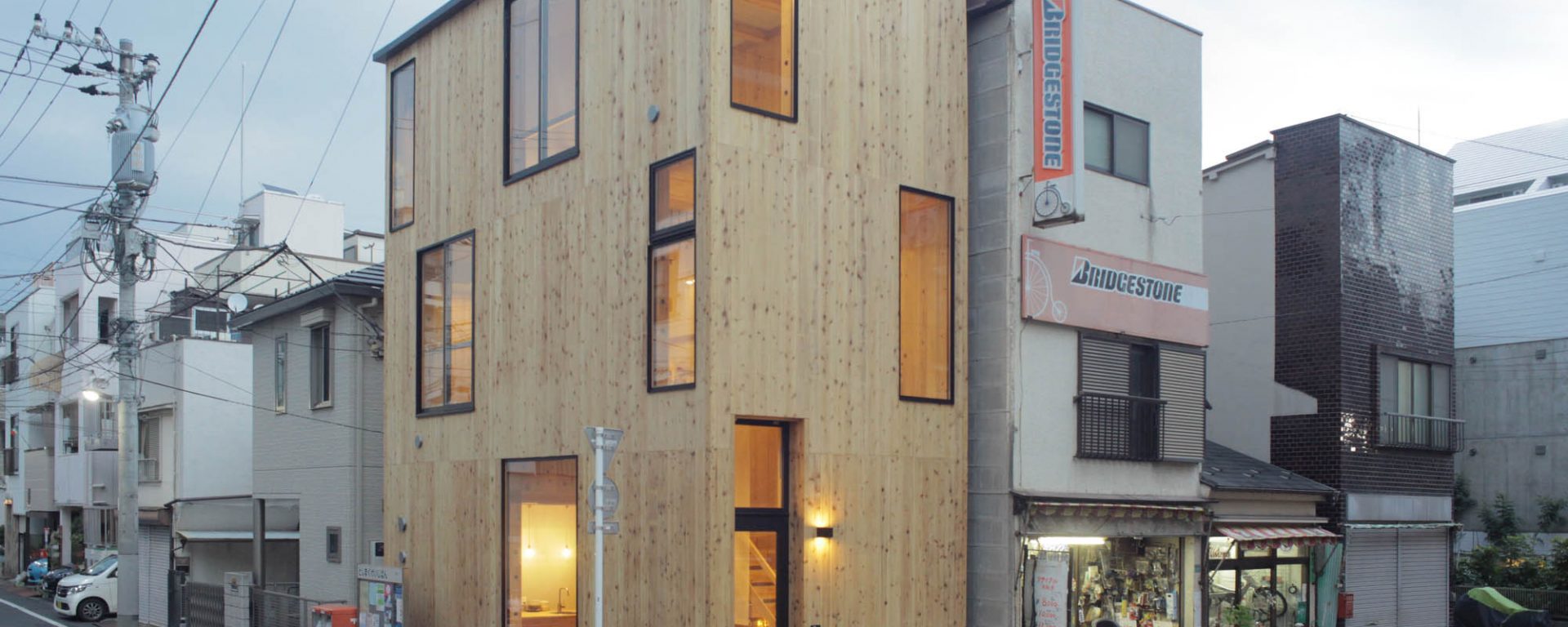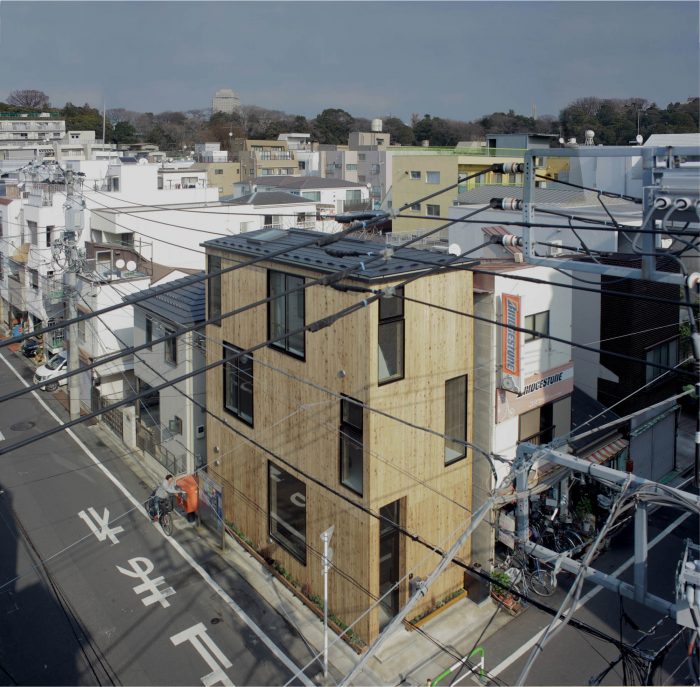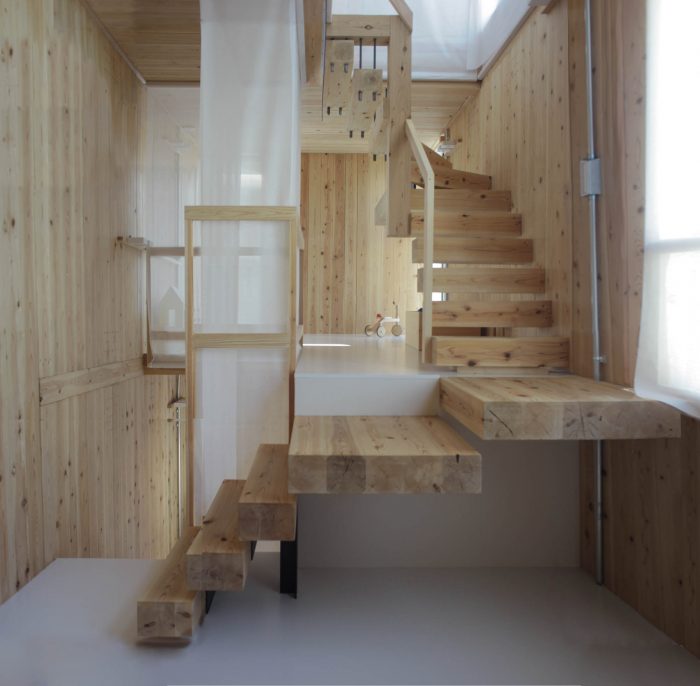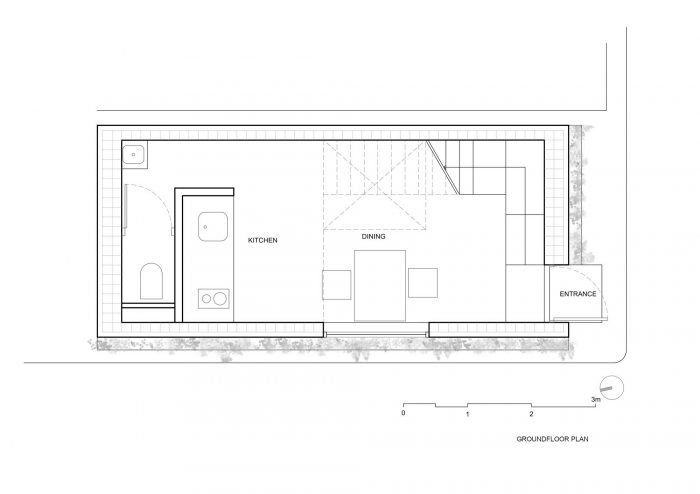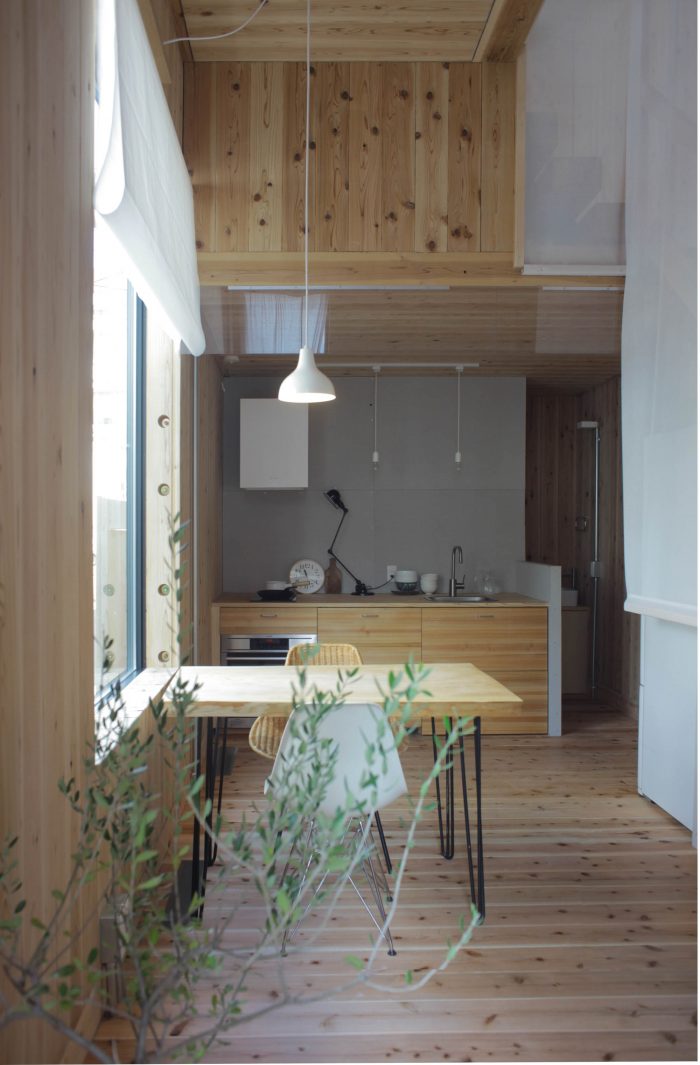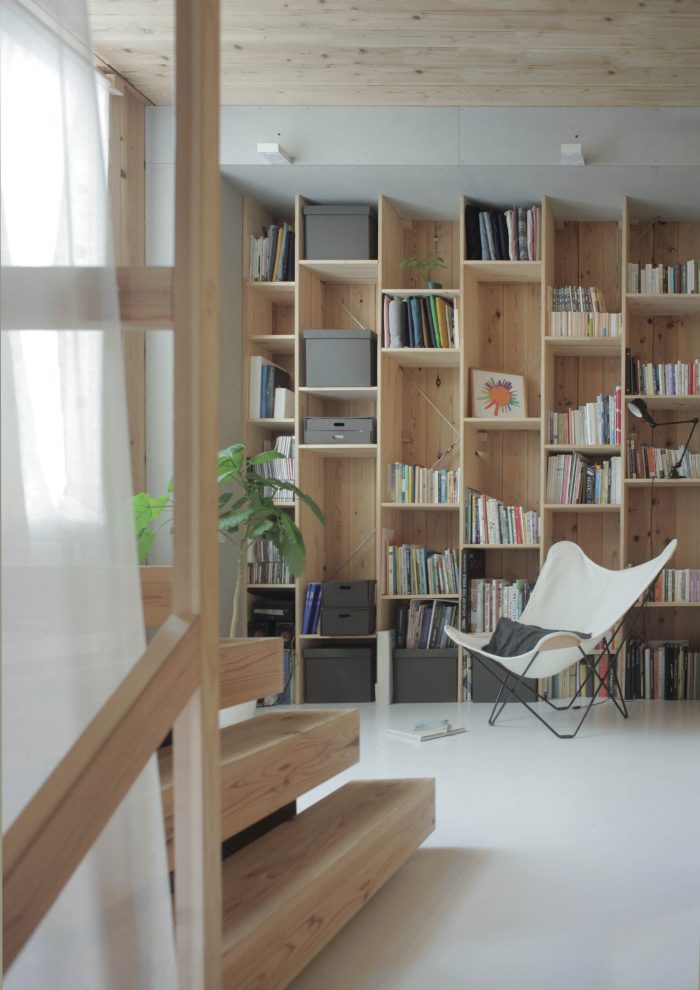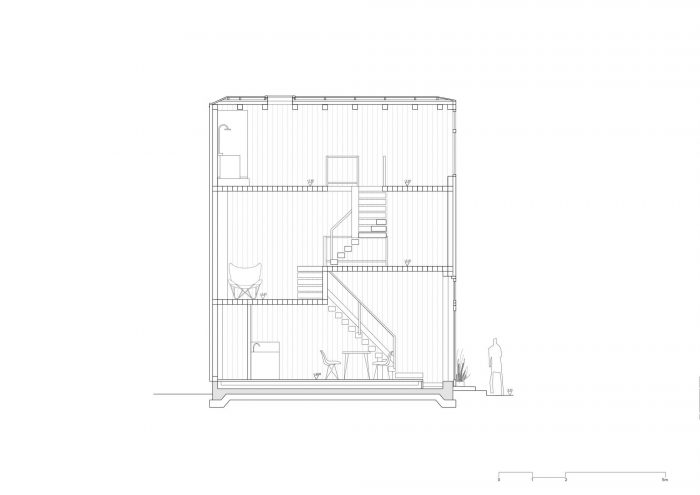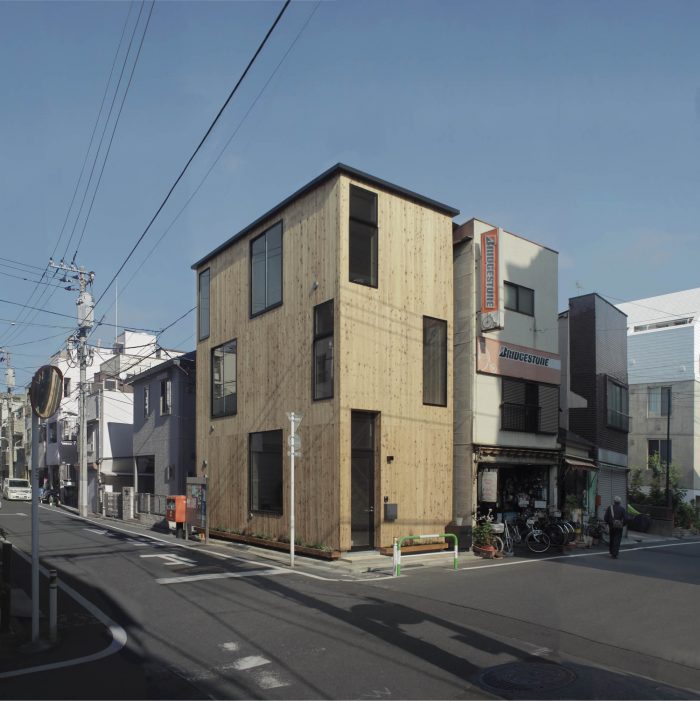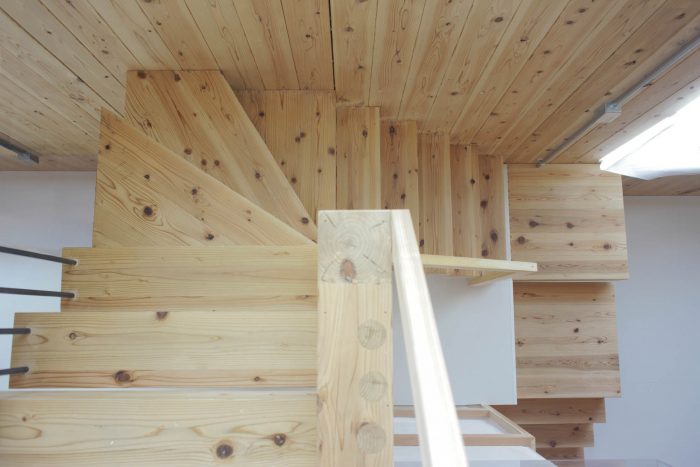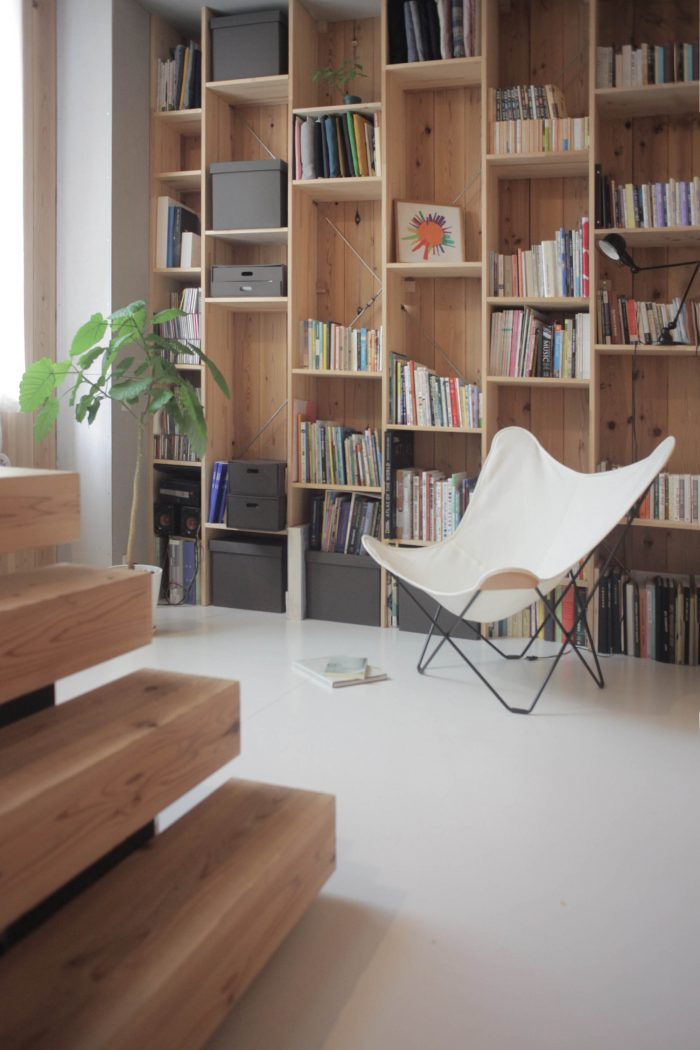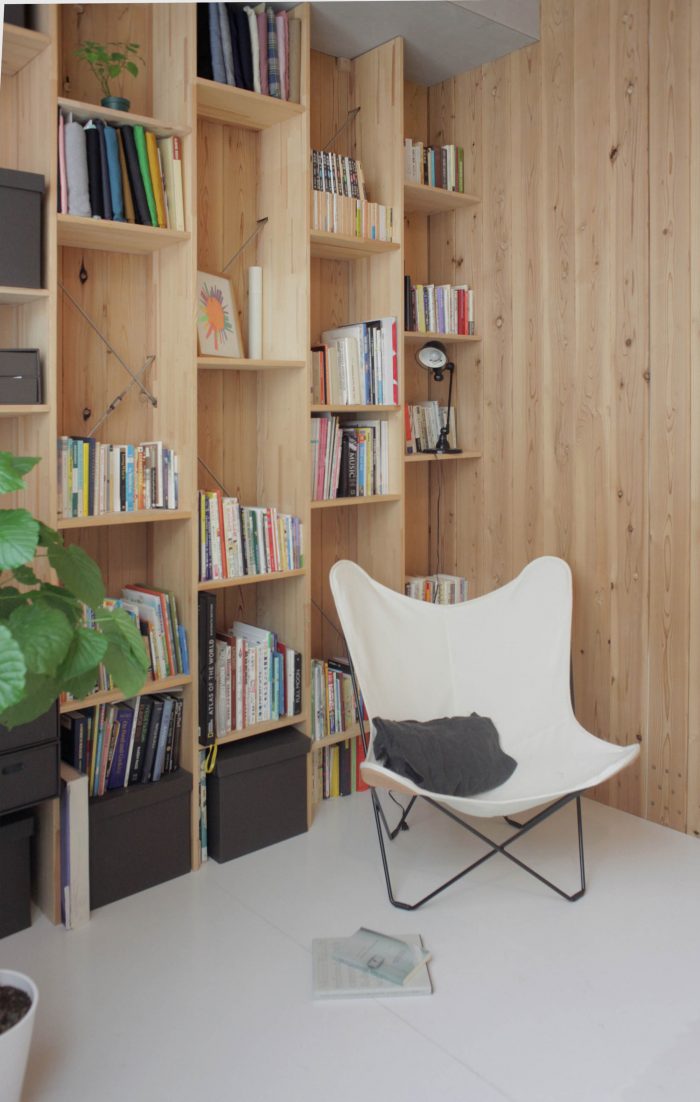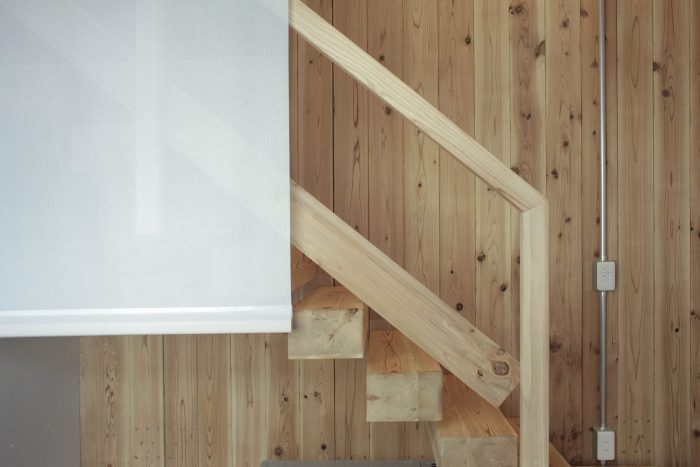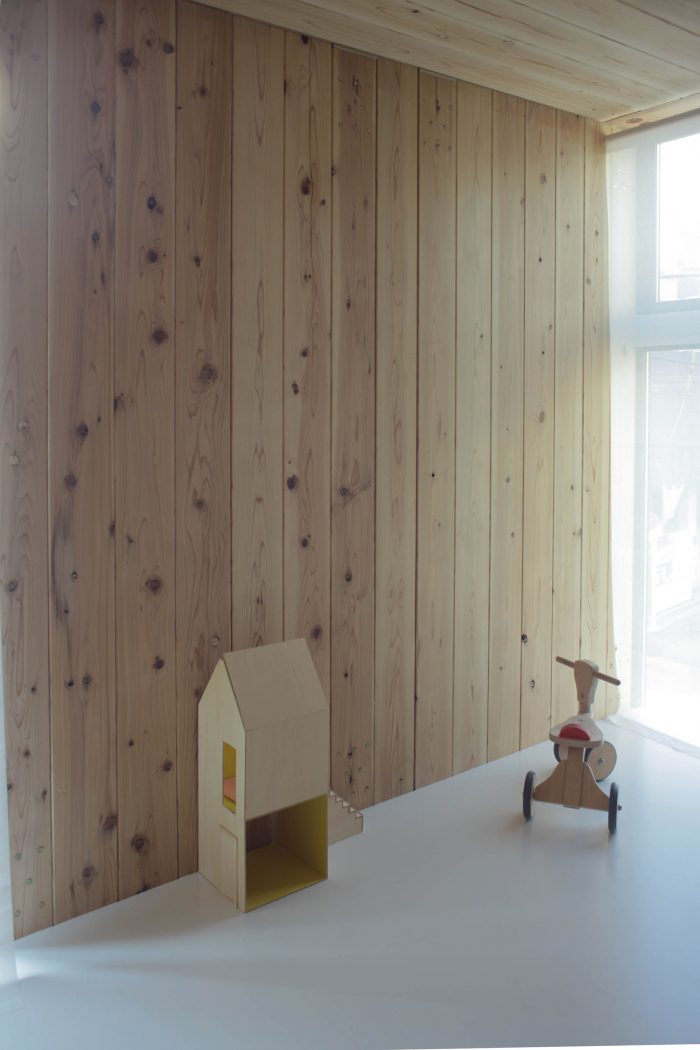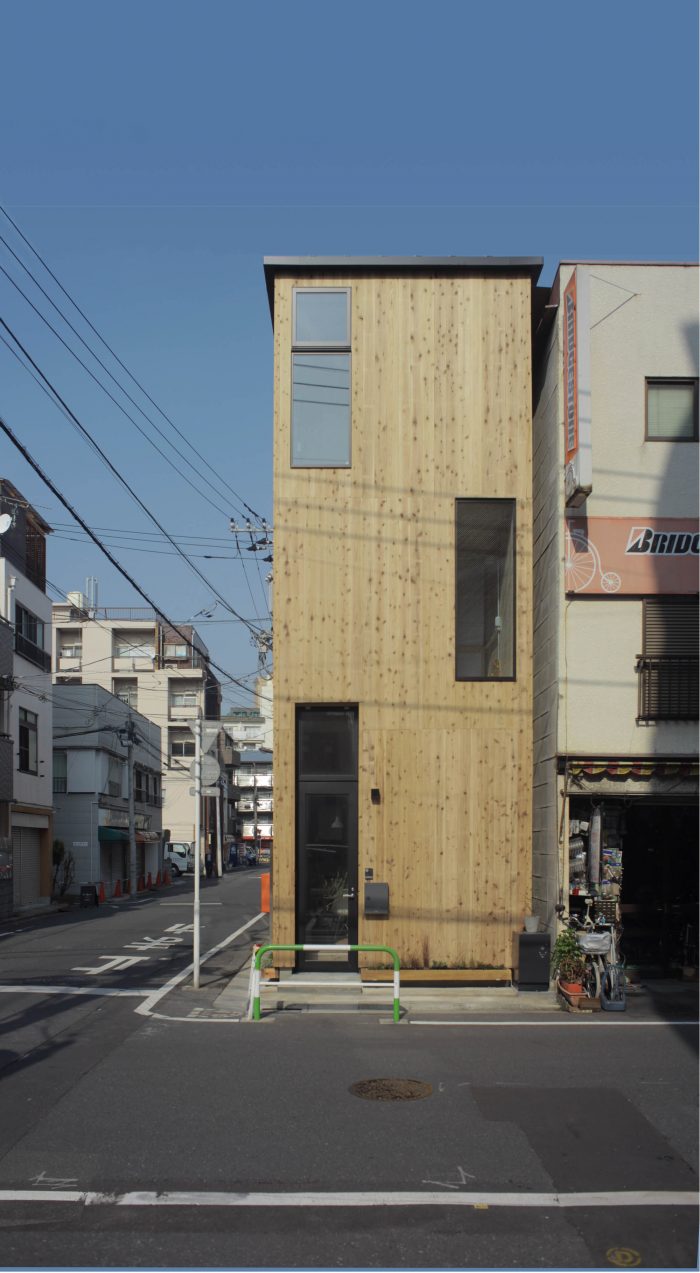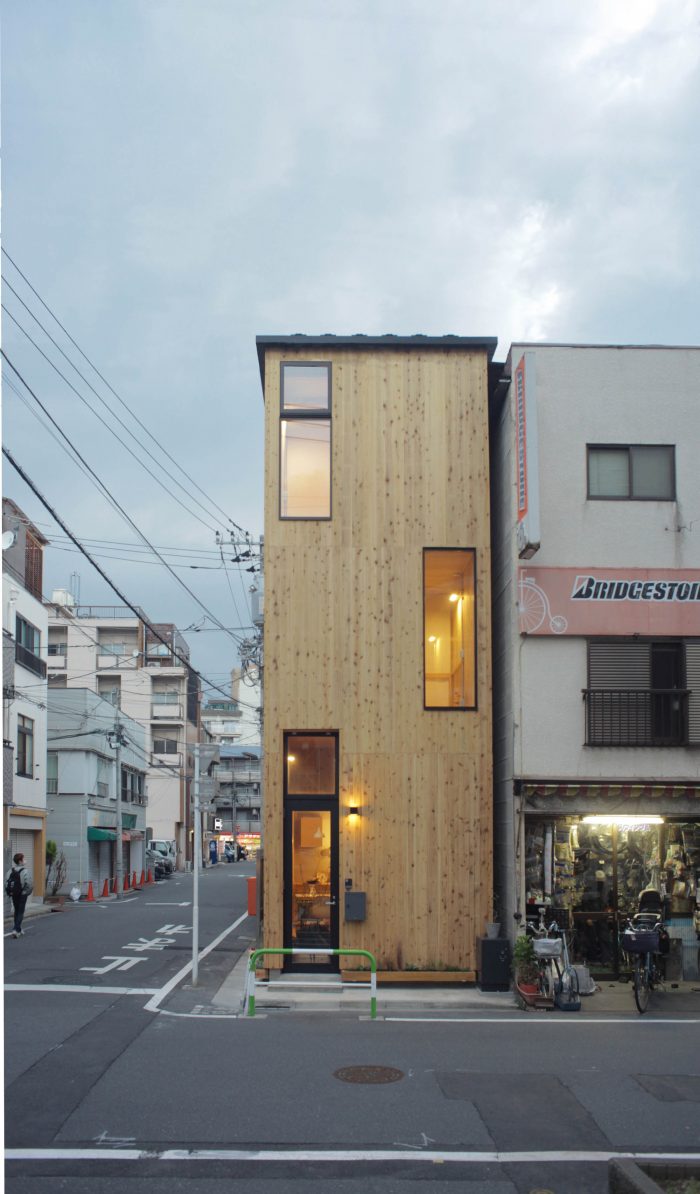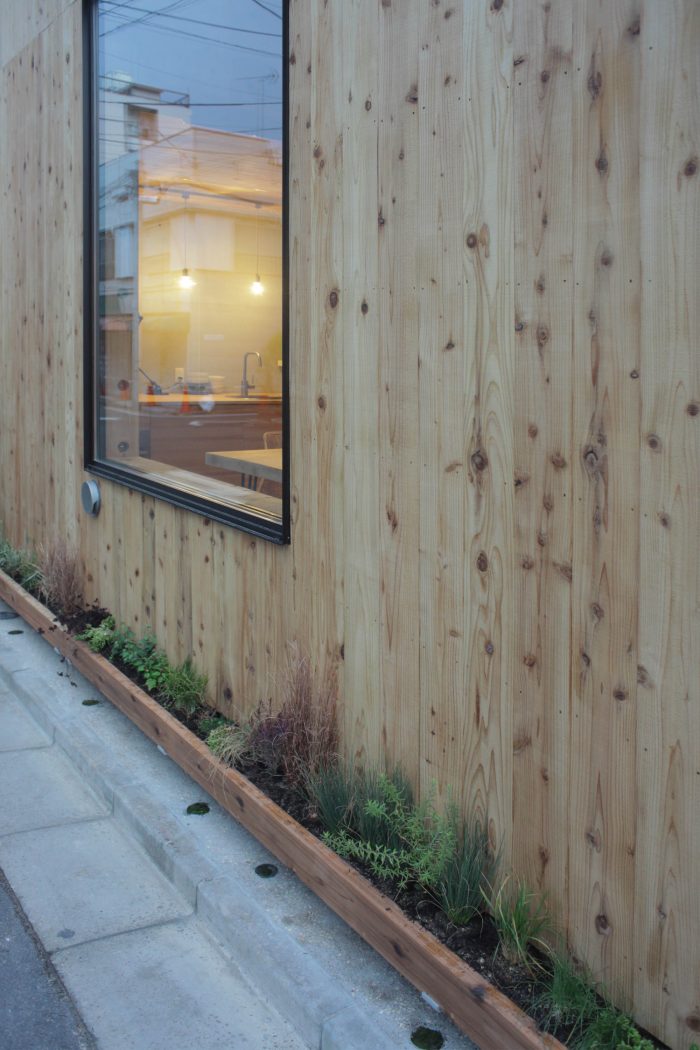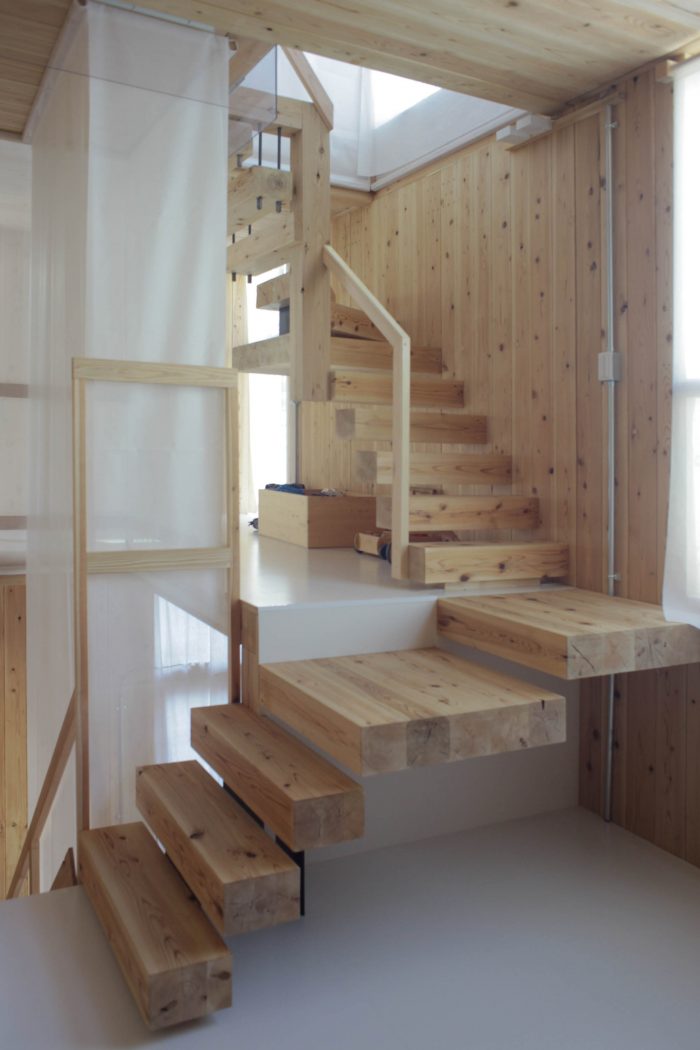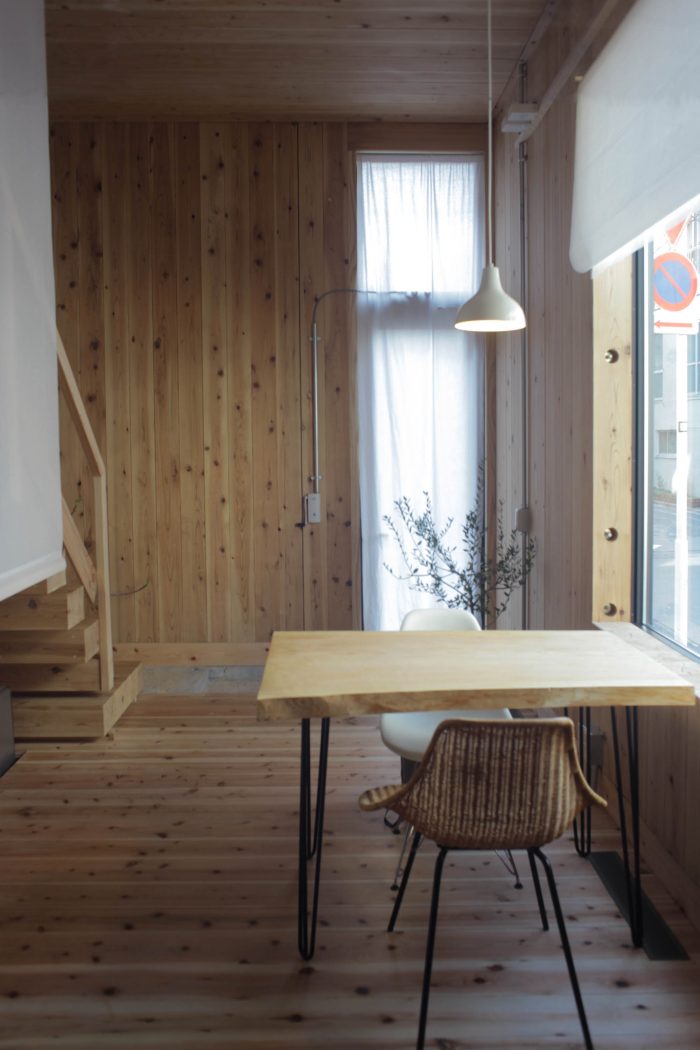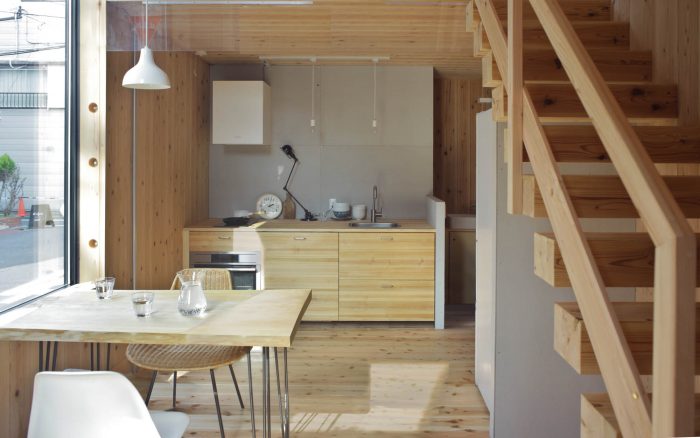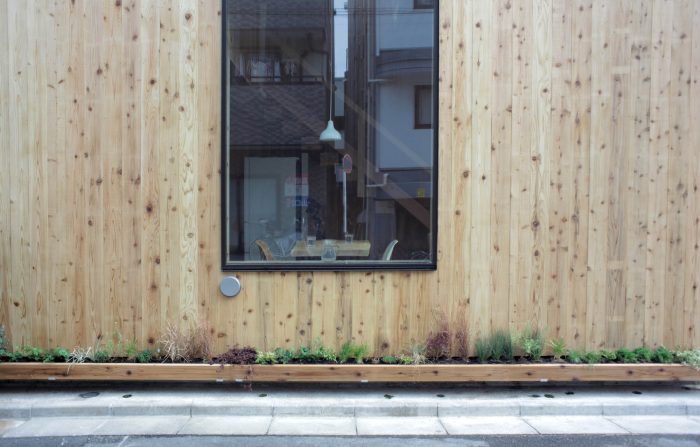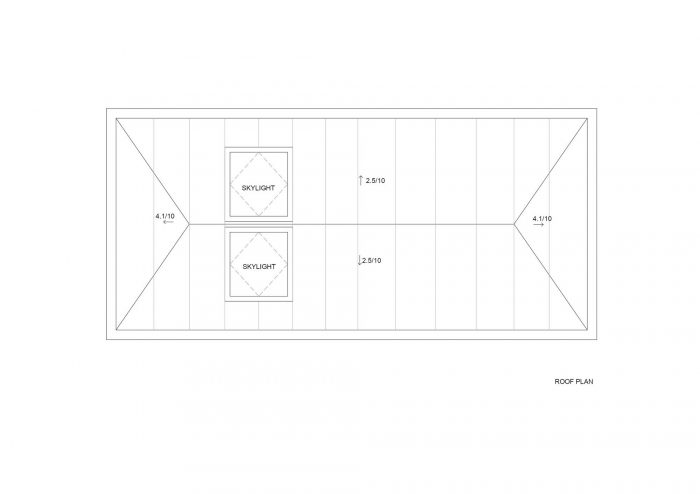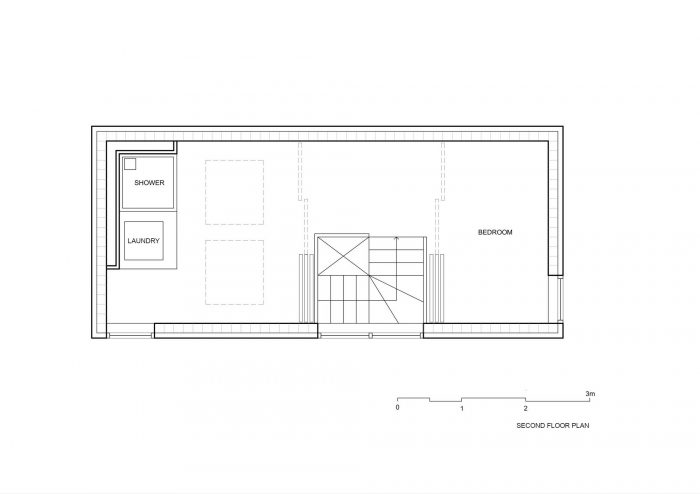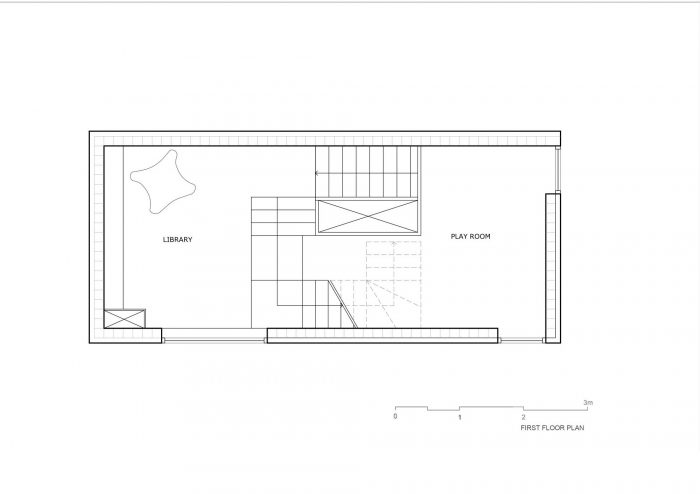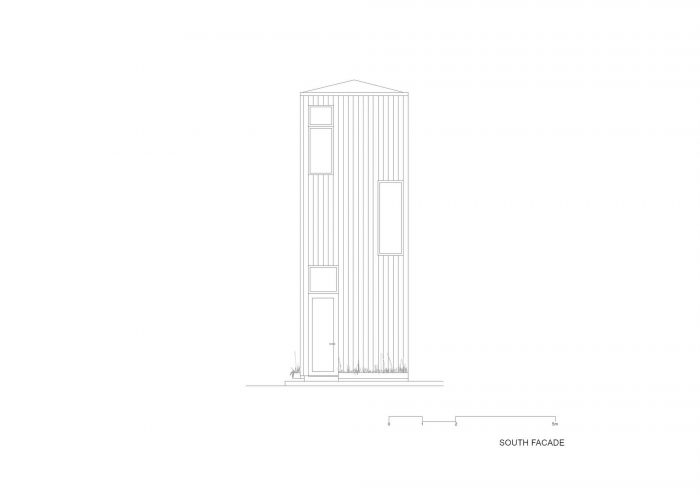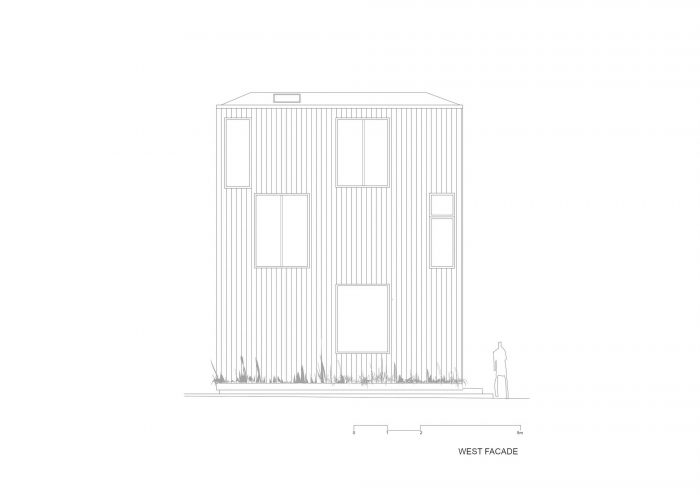这座四口之家的小房子位于东京人口密集的城市,占地3米宽。Selma Masic与Sei Haganuma(Haryu Wood Studio)合作,为她的家庭设计了这栋房子。建筑师将总面积为63平方米的房子设计成三层楼,每个区域都有一个松散的方案。生活空间之间的层次差异被设计成没有严苛的界限,根据居民的需求和时间为他们提供一系列活动的设置。
This small house for a family of four occupies a three-meter-wide plot in a densely-populated city in Tokyo. Selma Masic—in collaboration with Sei Haganuma (Haryu Wood Studio)—designed the house for her family home. The architects conceived the total area of 63 square meters as a three-story house with a loosely-defined program for each area. The difference in level between living spaces had been designed to merge without harsh boundaries, providing residents with settings for a range of activities depending on their needs and the time of day.
它的位置在街角,使得房子的内部和外部之间有一种独特的关系;大多数的生活空间可以设计成暴露在开口处,将自然光引入。面向街道的立面被设计成多孔的,但又不至于极度封闭或极度开放。为此,安装了窗帘作为临时隔断,让住户可以灵活地决定他们希望在视觉上向外开放多少空间。
Its location at the street corner allows a unique relationship between the inside and outside of the house; most of the living spaces could be designed to be exposed to openings that bring the natural light in. The façade facing the street was designed to be porous without being extremely closed or extremely open. For that purpose, curtains were installed as temporary partitions to give residents flexibility in determining how much they wanted to visually open the space to the outside.
通过固定的元素,如位于底层的厨房和位于三层的淋浴间,我们看到了空间功能的垂直梯度:随着楼层的升高,它从一个公共空间变为一个私密空间。目的是超越传统的生活方式,设计出一个为住户量身定做的空间,并随着住户的需求而变化。这种概念有助于将生活区融入城市环境中,而不是将它们作为独立的实体断开。
With fixed elements such as the kitchen located on the ground floor and the shower stall on the third floor, we see a vertical gradation in space functions: it changes from a public space to an intimate space as it gets higher. The aim was to transcend the conventional way of living by designing a space that is tailored to the residents and evolves with their needs. This kind of concept helps integrate living areas into the urban context rather than disconnect them as separate entities.
结构墙和地板由预制的红柏木板组成。这些板子由15×15厘米的方形木片组成,通过金属螺栓水平连接,不需要胶水。这个特点使得它们完全可以回收利用,同时也使房子有可能被拆卸并在其他地方重新使用。
The structural walls and floors are composed of prefabricated cedar wood panels. The panels are made of 15×15 cm square lumbers, connected horizontally by metal bolts without glue. This feature makes them completely recyclable while also allowing a possibility for the house to be disassembled and reused at the other location.
由于这种材料符合日本城市防火规定的高标准,所以可以将结构露出来,也可以不涂不盖。此外,保温材料和雪松木板作为外墙使用时,可以提高热性能。在日本城市中,采用这种施工方法制作的三层楼房是首例。与日本传统的木制房屋建造方法相比,这种方法的木材用量多出2倍。预计这将是一种有效的二氧化碳储存方式,并能重振日本的森林产业。
Since this material satisfies the high standards of fire protection regulations in urban Japan, it is possible to reveal the structure and leave it uncoated and uncovered. Additionally, thermal insulation and cedar wood planks improve thermal performance when used as a façade. A three-story house made using this construction method in urban Japan is the first of its kind. Compared to conventional wooden house construction methods in Japan, this method uses two times more lumber. This is expected to be an effective way of storing carbon dioxide and reinvigorating the forest industry in Japan.
建筑师:Haryu Wood Studio, Selma Masic
面积: 63 m²
年份:2018年
摄影:Selma Masic
厂家:Sanwa, Odelic, Tate Log
Lead Architect:Selma Masic, Sei Haganuma
牵头建筑师:Selma Masic, Sei Haganuma.
灯光设计:Hikaru Saito
成本管理:Takashi Nameda
结构工程:AUM Structural Engineering
国家:日本
Architects: Haryu Wood Studio, Selma Masic
Area: 63 m²
Year: 2018
Photographs: Selma Masic
Manufacturers: Sanwa, Odelic, Tate Log
Lead Architect:Selma Masic, Sei Haganuma
Lightning Design:Hikaru Saito
Cost Management:Takashi Nameda
Structural Engineering:AUM Structural Engineering
Country:Japan

